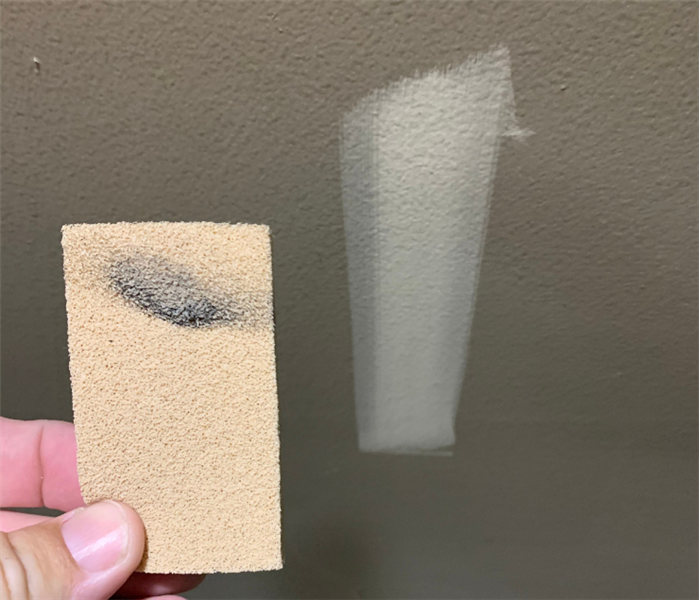Candle Soot: Why It Happens & How To Clean It Off Walls
10/1/2020 (Permalink)
Everyone loves to burn a candle and get cozy during the colder months of the year, but removing black soot from candles can cause a major headache. Black marks or stains can cover walls and ceilings, upholstery, cabinets, and even your appliances. As soot cleaning specialists, we're here to give some insight on why candles produce soot and how to clean candle soot off walls.
Where Does Candle Soot come From?
When you light a candle, the heat of the flame melts the wax which is then drawn up the wick. As the heat of the candle flame vaporizes the wax, it is broken down into hydrogen and carbon which reacts with the oxygen in the air to create the final product: Heat, light, water vapor and carbon dioxide.
When you look closely at a burning candle, you can see that it has different colors in the flame. At the base there is a blue area, then a dark orange-brown section, and then the large yellow area that we consider the candle flame.
The darker areas of the flame contain more oxygen particles and in turn efficiently combust the carbon, while the yellow areas have much less oxygen and have trouble combusting the carbon particles. Here is where candle soot comes from! When you see candle smoke, you are actually seeing soot particles caused by incomplete combustion of carbon.
In simple terms, candles produce soot when they do not burn cleanly or combust efficiently - and there are many reasons for this.
How To Prevent Candle Soot Production
Once you understand how candles work and why they produce soot, you can takes steps to prevent soot stains from your candles.
1 | Use quality candles.
High quality candles will naturally produce less soot than cheaply made candles. Low-quality candle manufacturers add additional fragrance oils or additives to their products which are not always suited for combustion and in turn do not burn cleanly.
2 | Keep candles away from windows or drafts.
When there is a draft or breeze, the flame of a candle will flicker. When the flame flickers, the combustion process is being interrupted and introduces too much oxygen or fuel to the combustion triangle. Flickering candles give off smoke, which will produce soot and other particulate matter. A consistent flame is important to preventing soot.
3 | Cut the candle wick down before every use.
Over time, the wick of your candle will naturally 'grow' as the wax gets lower and the wick does not burn away at the same rate. When the wick is larger, it will cause the flame to grow larger and reduce the efficiency of combustion and produce more smoke and soot. Cutting the wick down to 1/4 of an inch before every use will help ensure a well-balanced chemical reaction.
But How You Clean Candle Soot?
You have all the knowledge needed to prevent candle soot from covering your home in the future - but what about the soot that is already there? As a smoke and soot damage restoration company, we have only one recommendation for going about removing soot from walls or ceilings:
Use a 'dry cleaning sponge', also called a 'chemical sponge'.
These are available at home improvement stores like Home Depot or Lowes, and look similar to Magic Erasers for a few dollars. They are commonly used by professional restoration companies to clean soot and are made out of vulcanized latex rubber.
How Remove Soot With Chemical Sponge
- Use the sponge dry. Do not wet the sponge for cleaning.
- Start at the top of the affected area and work your way down in straight parallel firm strokes that overlap. You may need to repeat this process a few times before the wall or ceiling is completely cleaned.
- Do not scrub with a chemical sponge. This will cause streaking and may embed soot into the wall and make the stain worse.
- As you continue cleaning, the sponge may begin to look very dirty but you can continue to use it. You can remove a layer of the sponge to expose a clean surface if you prefer.
Soot Problems? Call SERVPRO - 203-707-1952
SERVPRO of Westport/Fairfield is a 24/7 damage restoration company specializing in fire, water, mold, and COVID-19 services. Don't wait for soot to get worse, call SERVPRO to make it "Like it never even happened."





 24/7 Emergency Service
24/7 Emergency Service
